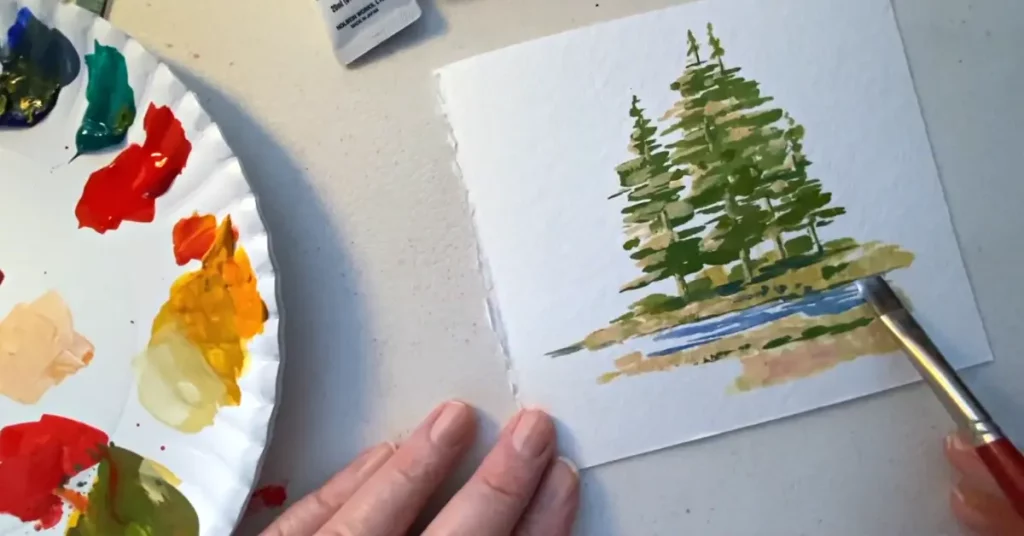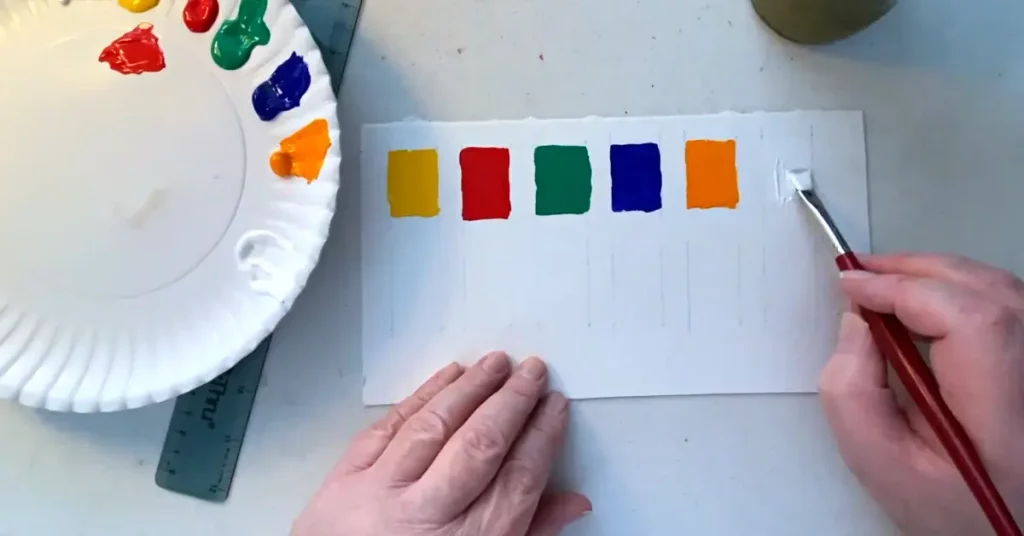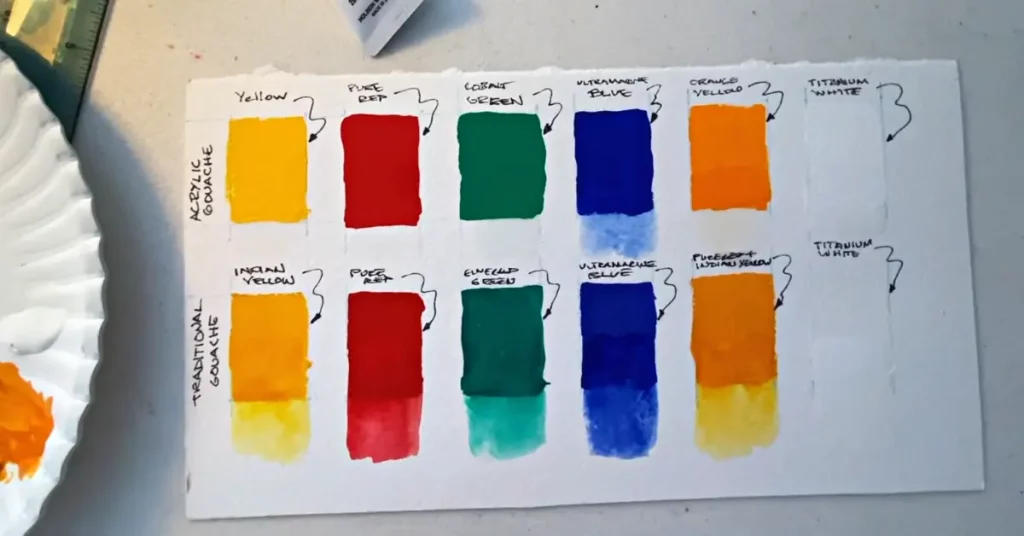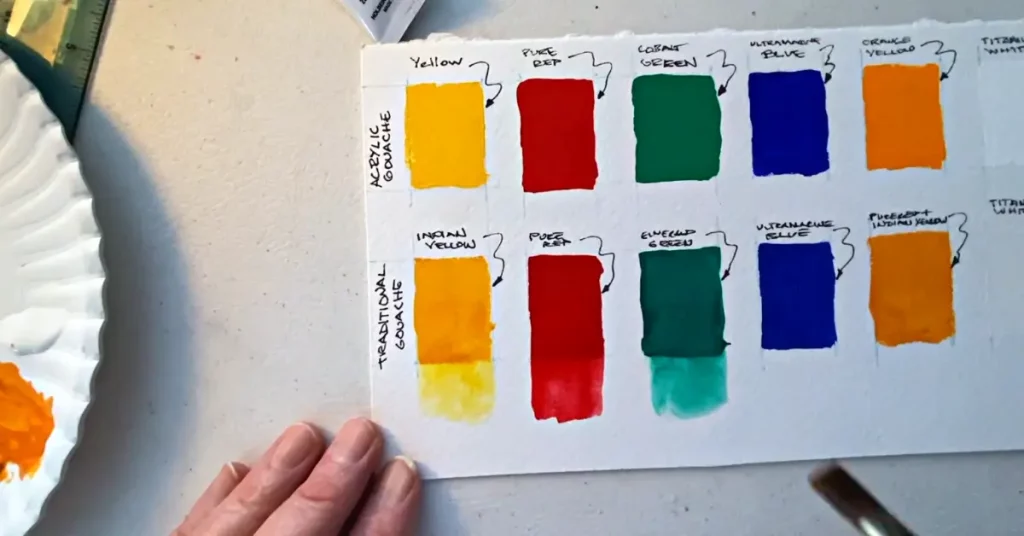Acrylic and gouache are the most popular water-based paint among beginners and medium-level arts lovers. Since acrylic and gouache are great for excellent color patterns and finish, you might need clarification about what would be best. No, worries! A comparison between acrylic gouache vs gouache can make sure you understand everything.

This guide will discuss the history of acrylic and traditional gouache. Also, you will know the properties, applications, and comparison of acrylic gouache and traditional gouache. If you are a beginner in the painting world, this guide is your helping hand.

The History of Acrylic gouache and gouache
Acrylic Gouache:
The history of gouache paint can be traced back to the medieval period. Acrylic gouache was developed in the 20th century as an alternative to oil paint. At that time, it was used by artists in the Middle East and Europe.
Acrylic gouache is a relatively new product that combines the best qualities of both gouache and acrylic gouache painting. It can be thinned with water like gouache, but it dries to a water-resistant, matte finish like acrylic paint. Acrylic gouache is highly pigmented, making it ideal for various art and design projects.
Acrylic paint is known for its versatility and ease of use, and it has become a popular choice for artists and crafters.

Traditional Gouache:
The origins of gouache paint can be traced back to ancient Egypt. It was used to create vibrant murals and illustrations. Medieval scribes also used it to create illuminated manuscripts. Besides, Renaissance artists used it to create bright, glowing colors in their paintings.

Do note that gouache becomes popular with commercial artists in the 19th and early 20th centuries for ease of use and versatile conveniences. Today, it is still popular with artists of all levels.
The comparison between acrylic and traditional gouache

Acrylic gouache and traditional gouache are similar because of the water-based feature. Let’s know some comparisons between these.
Consistency:
Acrylic gouache tends to have a thicker consistency than traditional gouache. So, you will feel more like acrylic paint. This can make it easier to control and apply to the canvas. But it isn’t easy to make a translucent effect.
On the contrary, traditional gouache tends to have a thinner consistency. As a result, the paint can run or spread more easily. So, you can easily achieve transparent and translucent effects. However, this can also make it more difficult to control and apply to the canvas.
Drying time:
Acrylic gouache typically dries faster than traditional gouache, making it more convenient for artists working on a tight deadline.
Traditional gouache takes longer to dry. It is good for those artists who want more time to work with the paint before it sets.
Lightfastness:
Both acrylic gouache and traditional gouache are lightfast. However, traditional gouache is generally considered to be lightfast than acrylic gouache. Do note that these are fading-resistant when exposed to light.
The application of acrylic gouache and traditional gouache paint

From the Acrylic gouache review, it is known that it is available with a variety of art and design applications. So, you can use it for Illustration, graphic design, calligraphy, textile design, and multimedia art. It can be applied with a brush, pen, or airbrush to achieve the desired consistency.
On the other hand, traditional gouache is used in Illustration, fine art, Mural painting, and comic book art. You will need a palette, water, and a selection of brushes, knives, or sponges to apply the paint.
The advantages and disadvantages of acrylic gouache and traditional gouache

Acrylic gouache Advantages:
- Acrylic gouache can be thinned with water and is easy to clean up.
- Acrylic gouache is lightfast and dries quicker than traditional gouache
- Acrylic gouache is more opaque than traditional gouache
Acrylic gouache Disadvantages:
- Acrylic gouache is generally more expensive than traditional gouache.
- It tends to have a slightly glossier finish than traditional gouache
- The color range of acrylic gouache is generally not as wide as traditional gouache
Traditional gouache Advantages:
- Gouache has a high pigment concentration, giving it a more vibrant and opaque finish.
- Gouache dries quickly, mixed easily with other paints, which makes it a versatile medium for creating various shades and tones.
- Gouache can be used on various surfaces, including paper, wood, and canvas.
Traditional gouache Disadvantages:
- While the high pigment concentration gives gouache its vibrant finish
- It can become brittle over time, which can cause cracks to appear in the paint layer.
- Gouache is less widely available than other types of paint and has a range of colors.
Final words:
We hope you got a lot of information about acrylic gouache vs gouache. Both acrylic and traditional gouache are popular paint for beginners. These are available with individual advantages and disadvantages. So, what you should choose depends on your preference.
Have you anything more to know about this guide? Then let us know so that we can update this guide soon.

S. Pushon is a paint expert, self-taught artist, and currently working as an adviser in the paint industry as a Quality Improvement and Development Assistant.
An artist by heart, he draws remarkable art pieces and as a professional paint industry individual, he seeks the insight and shares with enthusiasts. Read more…

